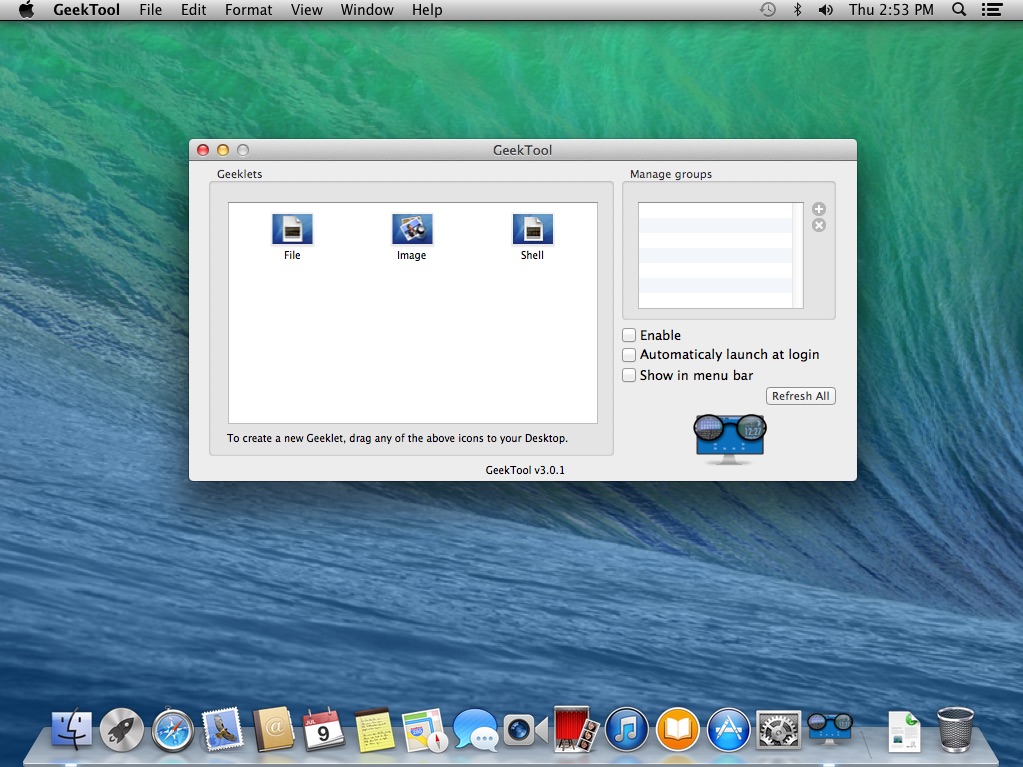

Now set it to 48pt type and position it under the previous Geeklet. With this in mind, drag out a new Shell Geeklet and toss in the following code: date +"%l:%M" I'm not usually in such a poor mental state that I can't figure out if it's morning, afternoon or evening. I'll use the twelve hour clock with no zeros and no AM/PM. date '+%H' - 02 (hour, 24 hour clock, no zero)Īll I really want for this is the hour and minute.date '+%I' - 02 (hour, 12 hour clock, with zero).date '+%k' - 2 (hour, 24 hour clock, no zero).date '+%l' - 2 (hour, 12 hour clock, no zero).In fact, we use the same exact process as before, only this time we'll need to pick from the pool of date snippets that relate to the time: With all of that great knowledge that we gleaned from the previous step, adding the time to our desktop should be a cinch. Resize the container and set a refresh rate. I'm keeping things pretty simple so I went with white, 13pt Lucida Grande. In the Properties window, click on the button near the bottom that says "Click here to set font & color" and customize the text to your liking. Once you insert this code, your result should automatically update. %d'Īs you can see, I used the long form weekday format followed by a comma, a space, the short form month, a period, a space and finally the day of the month.

Copy and paste the following code into the Command field.
#GEEKTOOL DESKTOP HOW TO#
Now that we can see how to get all the pieces that we need, we can easily toss them all together into a single script. date '+%Y' - 2012 (year with four digits).date '+%e' - 1 (day of month without zero).date '+%d' - 01 (day of month with zero).See how that works? Here's a larger list that should come in handy.


 0 kommentar(er)
0 kommentar(er)
